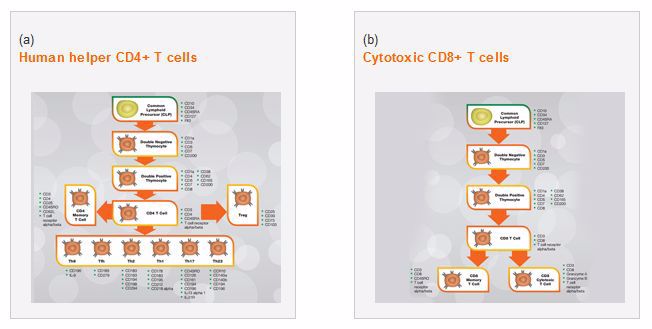T cells are lymphocytes that, along with B cells, form the adaptive, cell-mediated immune response. There are several different types of T cells:
- CD4+ helper T cells – one of the two main types of T cells, they activate other cells to respond to an antigen
- CD8+ cytotoxic T cells – the other main type of T cells, they kill infected target cells
- Natural Killer T cells – rare T cell, involved in immunoregulation of other cells
- Gamma delta T cells – often tissue specific and rapidly activated upon infection with multiple responses
- Regulatory T cells – regulate immune response by the suppression of T cells
- Mucosal associated invariant T cells – known as MAITs, they are mucosal specific T cells
- Memory T cells – antigen specific T cells that persist after an infection
T cells can also be known as effector T cells, which can be applied to any subtype of T cell and simply means they are ready to respond and are responding to a stimulus. As illustrated above the different T cell subtypes have distinct functions in the immune response against infection.
Fig. 1. Human helper CD4+ T cells (a) and cytotoxic CD8+ T cells (b). Click on the T cell lineage to view human lineage posters and guides. Mouse posters and guides are also available.

